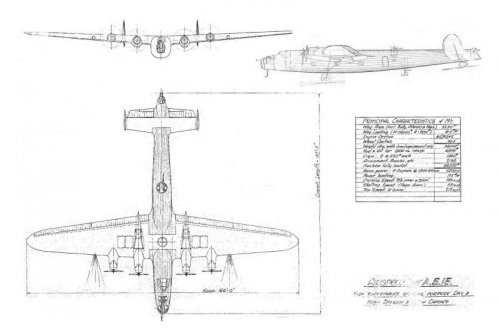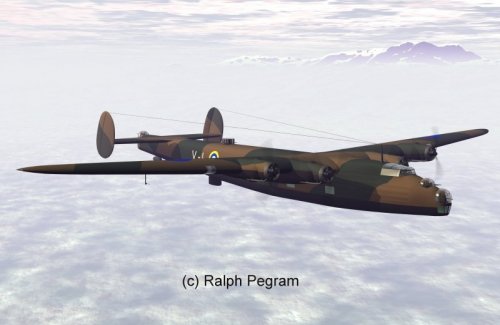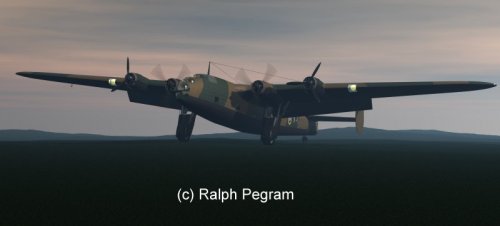- Joined
- 19 October 2012
- Messages
- 1,942
- Reaction score
- 1,827
The Airspeed AS15 was a speculative design for a High Performance General Purpose Day & Night Bomber and Troop Carrier produced by Hessel Tiltman and dated April 1935. No specification for such an aircraft had been issued by the Air Ministry.
The AS15 was large, 58000lb loaded, with a span over 50ft greater than that of future large bombers such as the Lancaster and Halifax. It was of conventional construction with fabric covered fuselage and control surfaces. Wing covering is unclear but probably stressed plywood, maybe metal.
The bomber was to be powered by four air-cooled radial engines of around 1300hp within cowls of just 5ft diameter. No engine of this power and diameter existed at the time although Armstrong-Siddeley had possible ‘Dog’ types on the drawing board and it is just possible that Bristol were contemplating a Twin-Aquila. Cruising speed would be 195mph at 5000ft (dangerously low) and top speed 215mph at the same height. Range ~1000 miles.
Armament consisted of twin machine guns in the tail and retractable ventral turrets and the turret ahead of the cockpit, and some larger calibre gun, possibly a cannon, in the nose and retractable dorsal turrets. Total military load was 7130lb, which after allowance for the guns and ammunition, would be over 5000lb of bombs.
Span 166 ft
Length 137 ft 6 in
Weight bare 38000 lb
Weight loaded 58000 lb
The design has nothing in common with the company’s later AS29 Bomber tendered to spec. B.1/35
The AS15 was large, 58000lb loaded, with a span over 50ft greater than that of future large bombers such as the Lancaster and Halifax. It was of conventional construction with fabric covered fuselage and control surfaces. Wing covering is unclear but probably stressed plywood, maybe metal.
The bomber was to be powered by four air-cooled radial engines of around 1300hp within cowls of just 5ft diameter. No engine of this power and diameter existed at the time although Armstrong-Siddeley had possible ‘Dog’ types on the drawing board and it is just possible that Bristol were contemplating a Twin-Aquila. Cruising speed would be 195mph at 5000ft (dangerously low) and top speed 215mph at the same height. Range ~1000 miles.
Armament consisted of twin machine guns in the tail and retractable ventral turrets and the turret ahead of the cockpit, and some larger calibre gun, possibly a cannon, in the nose and retractable dorsal turrets. Total military load was 7130lb, which after allowance for the guns and ammunition, would be over 5000lb of bombs.
Span 166 ft
Length 137 ft 6 in
Weight bare 38000 lb
Weight loaded 58000 lb
The design has nothing in common with the company’s later AS29 Bomber tendered to spec. B.1/35



